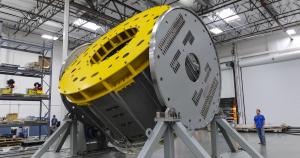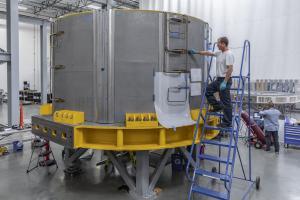Fabrication complete on first of 7 modules
When ITER begins operations in 2025, its plasma will be initiated by the largest stacked pulsed superconducting magnet ever built—the ITER central solenoid. The US ITER magnets team, based at Oak Ridge National Laboratory, is overseeing the fabrication of the central solenoid modules, support structures, and assembly tooling. A major milestone was reached this spring when vendor General Atomics completed fabrication of the first of seven modules.



